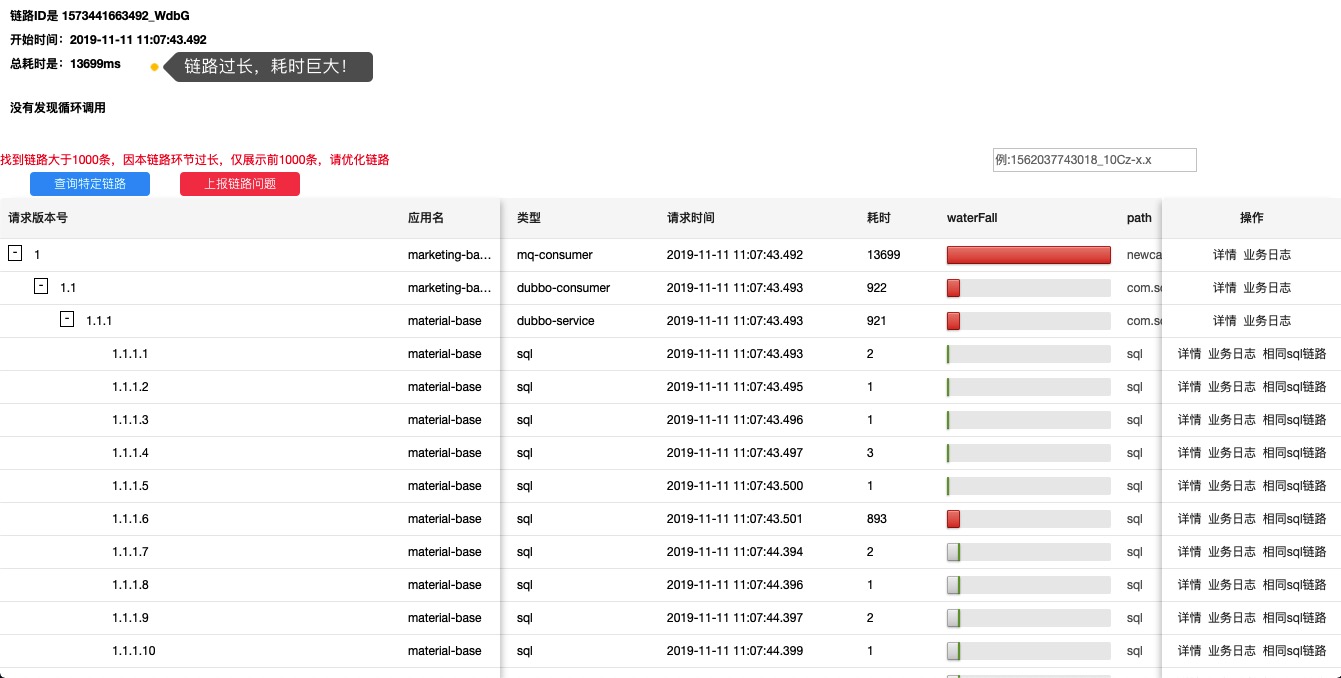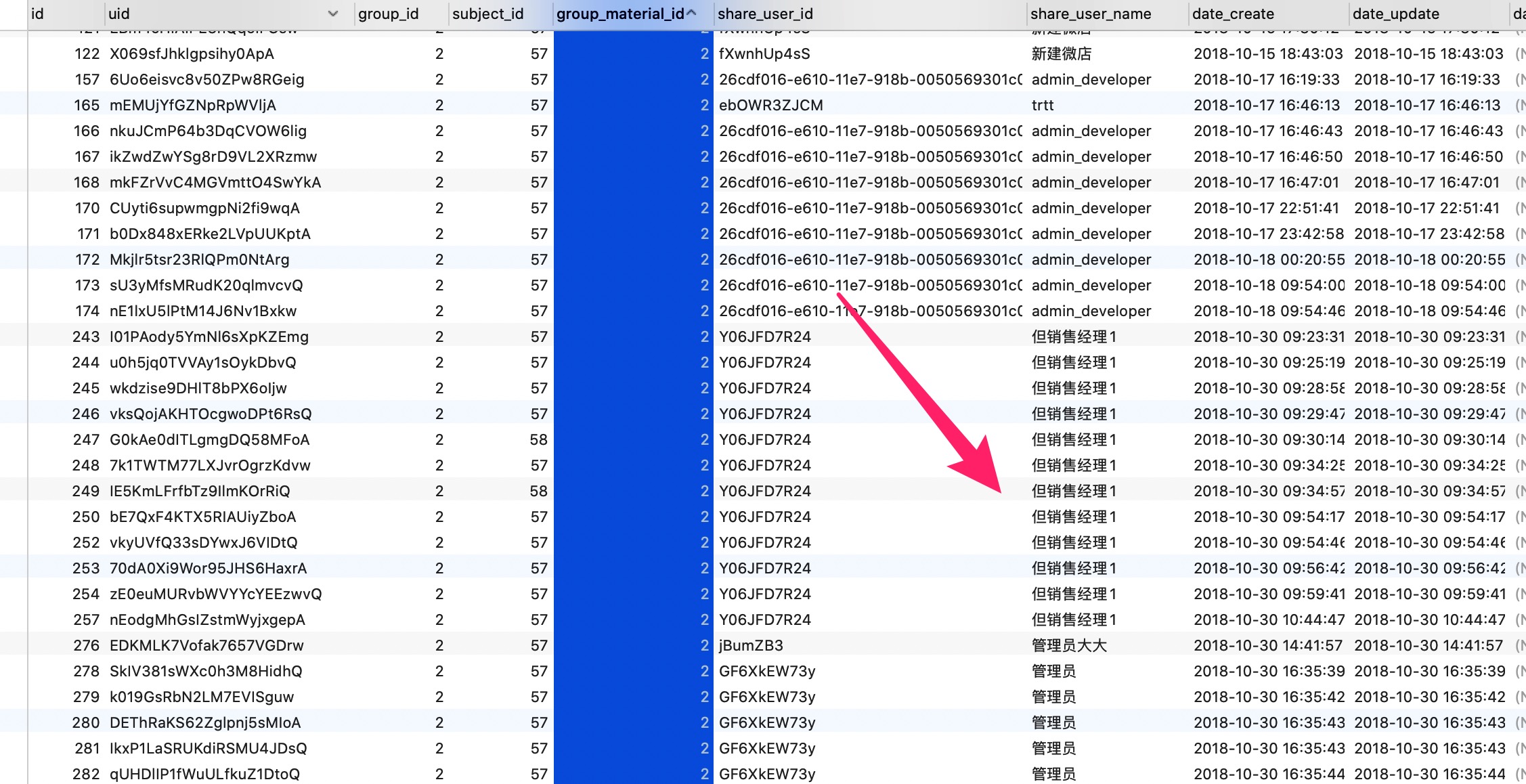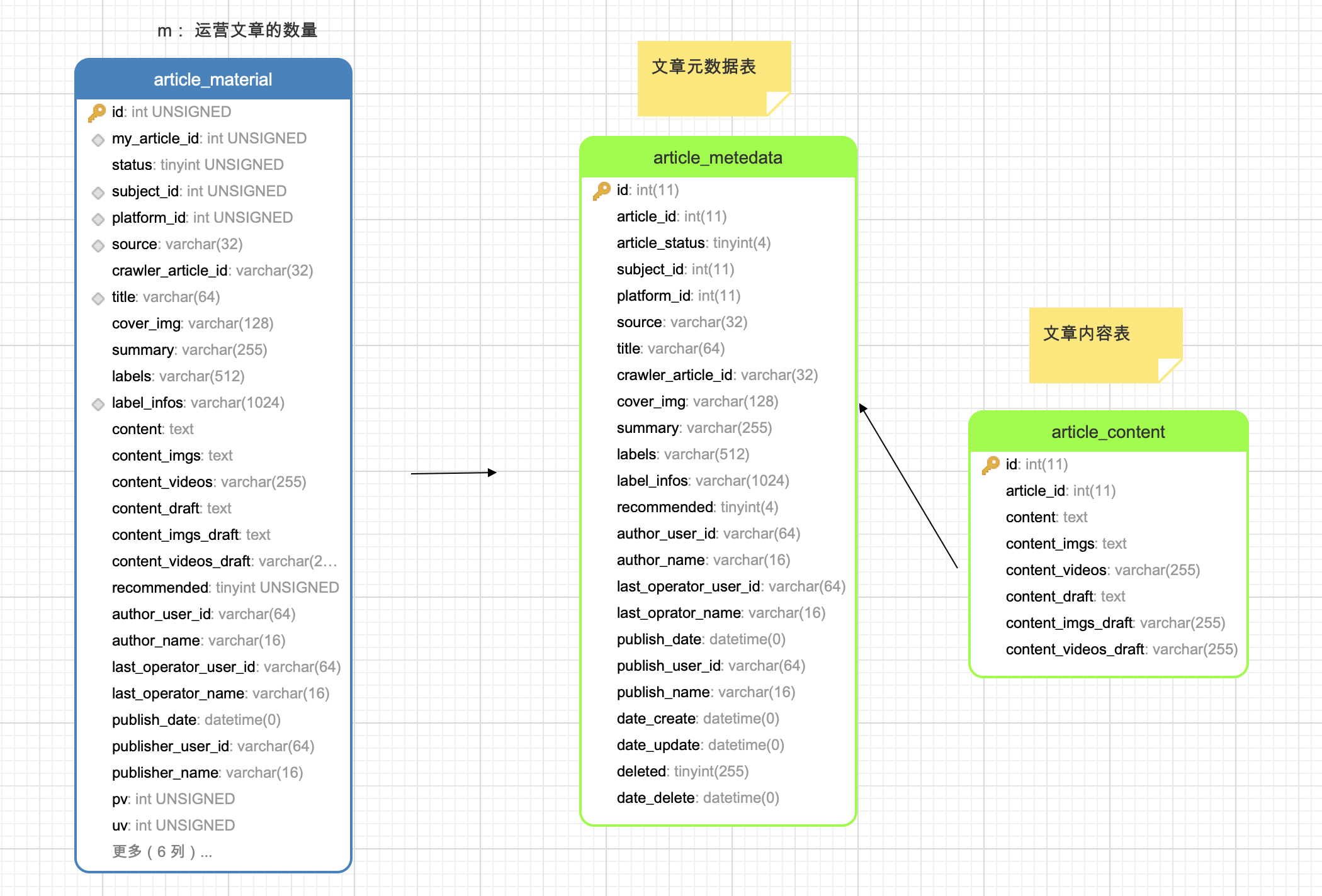拨乱反正-重构是门艺术活
- 2019 年 11 月 14 日
- 筆記
前言
引用自: 《重构 改善既有代码的设计》
重构是在不改变软件可观察行为的前提下改善其内部结构。当你面对一个最需要重构的遗留系统时,其规模之大、历史之久、代码质量之差,常会使得添加单元测试或者理解其逻辑都成为不可能的任务。此时你唯一能依靠的就是那些已经被证明是行为保持的重构手法: 用绝对安全的手法从焦油坑中整理出可测试的接口,给它添加测试,以此作为继续重构的立足点。
因为我们部门内容平台的文章系统之前遗留了很多问题,急需解决这些具有"坏味道"的代码。最后因为其他人手头里都有其他工作,最后这些任务就交给了我。以下是急需解决的问题。
- 内容平台新增/更新/取消/删除文章,同步各集团下文章行为状态,消息链路过长的问题。
- article分享表停止规模新增,之前未做插入前的记录判断,通过新增的操作来进行记录留存。
- 文章表拆除大字段到分表,如content、content_draft等字段。
链路过长概述
内容平台新增/更新/取消/删除文章,同步各集团下文章行为状态,消息链路过长的问题。
-
问题导火索: 运营后台文章发布,发送消息到marketing-base
-
慢链路,链路过长
-
mysql数据同步,单条执行n次
-
es索引数据同步,dubbo接口调用n次
-

图1 链路图
链路过长剖解及解决思路
具体问题,具体对待
//开启同步开关的集团 List<Integer> groupList = autoSyncStatusService.getAutoSyncGroupByManageType(MANAGE_TYPE_GROUP_ARTICLE); for (Integer groupId : syncSubjectList) { SiteGroupInfoDTO siteGroupInfo = siteSPI.getGroupInfoById(groupId); Set<String> groupBrandSet = carOnSaleManage.getGroupBrandSet(siteGroupInfo); List<String> matchedBrandCodes = extractBrandCodesFromArticleLabel(article.getLabelInfos()); if (CollectionUtils.isEmpty(matchedBrandCodes) || CollectionUtils.containsAny(groupBrandSet, matchedBrandCodes)) { ArticleGroupMaterialBO groupMaterialBO = ArticleBeanConverter.convertMaterial2GroupMaterial(article, groupId, groupList); // 设置对应的集团主题id ArticleGroupSubjectBO groupSubjectBO = articleGroupSubjectService.getGroupSubjectBySoucheId(groupId, article.getSubjectId()); if (Objects.nonNull(groupSubjectBO.getId())) { groupMaterialBO.setSubjectId(groupSubjectBO.getId()); groupMaterialBO.setMaterialId(myArticleId); articleGroupMaterialService.addArticleGroupMaterial(groupMaterialBO); } } } else { //查询同步的文章数据是否存在 List<ArticleGroupMaterialBO> list = articleGroupMaterialService.getListByMaterialId(myArticleId); for (ArticleGroupMaterialBO a : list) { if (groupList.contains(a.getGroupId())) { articleGroupMaterialService.changeRecommendStatus(a.getId(), a.getGroupId(), recommend, article.getLastOperatorName(), article.getLastOperatorName()); } } }-
第4行中我们可以看到这里有一个for循环♻️,假设开启同步开关的集体有1000家,则第18行中mysql插入操作就需要执行1000次。
-
第24行这里同样有一个for循环体♻️,则26行内部的es数据同步则需要调用1000次。它的实现如下:
@Override public boolean changeRecommendStatus(int id, int groupId, int recommended, String lastOperatorUserId, String lastOperatorName) { final boolean success = articleGroupMaterialDAO.changeRecommendStatus( id, groupId, recommended, lastOperatorUserId, lastOperatorName) > 0; if (success) { //更新索引,更改推荐状态 articleSearchManage.updateArticleIndex(ArticleIndexUtil.getUpdateRecommendIndex(recommended, id, lastOperatorName)); } return success; }解决思路
Mybatis批量插入
对于第一个循环♻️体中,我们需要将数据批量添加到数据库,
mybatis提供了将list集合循环添加到数据库的方法。- mapper层中创建
insertForeach(List < Fund > list) 方法,返回值是批量添加的数据条数
public interface FundMapper { int insertForeach(List<Fund> list); }- mybatis的xml文件中的insert语句如下
<?xml version="1.0" encoding="UTF-8" ?> <!DOCTYPE mapper PUBLIC "-//mybatis.org//DTD Mapper 3.0//EN" "http://mybatis.org/dtd/mybatis-3-mapper.dtd" > <mapper namespace="com.center.manager.mapper.FundMapper"> <insert id="insertForeach" parameterType="java.util.List" useGeneratedKeys="false"> insert into fund ( id,fund_name,fund_code,date_x,data_y,create_by,create_date,update_by,update_date,remarks,del_flag) values <foreach collection="list" item="item" index="index" separator=","> ( #{item.id}, #{item.fundName}, #{item.fundCode}, #{item.dateX}, #{item.dataY}, #{item.createBy}, #{item.createDate}, #{item.updateBy}, #{item.updateDate}, #{item.remarks}, #{item.delFlag} ) </foreach> </insert> </mapper>ES批量更新
com.souche.elastic.search.api.IndexService
方法:BulkUpdateResponse bulkUpdate(String index, Map<String, Object> event, String query, String origin) 参数: index:要操作的索引 event:更新的数据,可以只包含需要更新的字段,相当于mysql的update语句中的set语句中的字段 query:query中的条件相当于mysql中的where,具体语法与下面的搜索接口中【querys:string 复杂的复合查询 不同字段的OR 查询】相同 origin:操作源,一般写调用方自己的应用名,用于区分不同调用方 返回值: BulkUpdateResponse: { requestId:本次操作的唯一标示 status:状态,目前返回默认都是true updated:成功更新的条数 failed:更新失败的条数 message:第一条更新失败的原因 } 调用示例:1Map<String, Object> data = new HashMap<>(); 2 data.put("id", 20); 3 data.put("title", "xue yin"); 4 data.put("content", "kuang dao"); 5 BulkUpdateResponse response = indexService.bulkUpdate("test_index", data, "address=bj AND contry=cn", "shenfl");这条更新将test_index索引中所有 address是bj并且contry是cn 的数据的 title更新成‘xue yin’ content更新成‘kuang dao’,注意:address和contry两个字段在索引中需要加索引
- mapper层中创建
Article表插入逻辑优化,停止规模新增概述
Article逻辑优化剖解及解决思路
具体问题及解决思路
当前article数据表数据量:
select count(*) as 总数 from article;结果如下:
总数 369737 @Override public String addSharedArticle(ArticleBO articleBO) { ArticleDO articleDO = new ArticleDO(); BeanUtils.copyProperties(articleBO, articleDO); String shortUUID = UUIDUtil.getShortUUID(); articleDO.setUid(shortUUID); if (articleDAO.addSharedArticle(articleDO) > 0) { return shortUUID; } return StringUtil.EMPTY_STRING; }从上面这个业务逻辑实现类中,我们可以看到事实上我们想得到的是插入表数据的uid。但是之前的逻辑中,我们并没有判断该条数据是否已经存在,我们需要在上面代码中判断数据是否存在,已存在,查询最后一天数据的uid返回给上层。不存在的话,执行插入操作。

文章表拆除大字段到分表
article_material表结构设计
article_material | CREATE TABLE `article_material` ( `id` int(10) unsigned NOT NULL AUTO_INCREMENT, `my_article_id` int(10) unsigned NOT NULL DEFAULT '0' COMMENT '内容平台我的文章id', `status` tinyint(3) unsigned NOT NULL COMMENT '1-待发布、2-发布、3-取消发布', `subject_id` int(10) unsigned NOT NULL DEFAULT '0' COMMENT '主题id', `platform_id` int(10) unsigned NOT NULL DEFAULT '0' COMMENT '平台id', `source` varchar(32) NOT NULL DEFAULT '' COMMENT '版块', `crawler_article_id` varchar(32) NOT NULL DEFAULT '0' COMMENT '爬虫的文章id', `title` varchar(64) NOT NULL DEFAULT '' COMMENT '标题', `cover_img` varchar(128) NOT NULL COMMENT '封面图', `summary` varchar(255) NOT NULL DEFAULT '' COMMENT '摘要', `labels` varchar(512) NOT NULL DEFAULT '' COMMENT '标签', `label_infos` varchar(1024) NOT NULL DEFAULT '' COMMENT '标签详细信息', `content` text NOT NULL COMMENT '内容,用户看到的', `content_imgs` text NOT NULL COMMENT '内容中图片', `content_videos` varchar(255) NOT NULL DEFAULT '' COMMENT '内容中视频', `content_draft` text NOT NULL COMMENT '草稿内容,编辑后保存到这里,发布后内容会复制到content,此字段清空', `content_imgs_draft` text NOT NULL COMMENT '草稿内容的图片,同上', `content_videos_draft` varchar(255) NOT NULL DEFAULT '' COMMENT '草稿内容的视频', `recommended` tinyint(1) unsigned NOT NULL DEFAULT '0' COMMENT '0-不推荐、1-推荐', `author_user_id` varchar(64) NOT NULL DEFAULT '' COMMENT '作者userId', `author_name` varchar(16) NOT NULL COMMENT '作者名称', `last_operator_user_id` varchar(64) NOT NULL DEFAULT '' COMMENT '最后操作人userId', `last_operator_name` varchar(16) NOT NULL COMMENT '最后操作人名字', `publish_date` datetime DEFAULT NULL COMMENT '发布时间', `publisher_user_id` varchar(64) NOT NULL DEFAULT '' COMMENT '发布者userId', `publisher_name` varchar(16) NOT NULL DEFAULT '' COMMENT '发布者名字', `pv` int(10) unsigned NOT NULL DEFAULT '0' COMMENT '流量pv', `uv` int(10) unsigned NOT NULL DEFAULT '0' COMMENT '流量uv', `share_count` int(10) unsigned NOT NULL DEFAULT '0' COMMENT '分享次数', `share_people_count` int(10) unsigned NOT NULL DEFAULT '0' COMMENT '分享人数', `date_create` datetime NOT NULL, `date_update` datetime NOT NULL, `date_delete` datetime DEFAULT NULL, `deleted` bigint(20) unsigned NOT NULL DEFAULT '0' COMMENT '0 表示未删除,删除后是毫秒级时间戳', PRIMARY KEY (`id`), UNIQUE KEY `uniq_id` (`my_article_id`), KEY `idx_title_label_status` (`subject_id`,`platform_id`,`title`,`label_infos`(255),`source`) ) ENGINE=InnoDB AUTO_INCREMENT=861 DEFAULT CHARSET=utf8 COMMENT='文章素材库,给集团提供文章素材'上表中content, content_imgs,content_videos都是text类型等大字段,对于这种类型,我们需要把这种类型的表拆分成2张表 article_metedata和article_content 两张表。
表拆分图示



